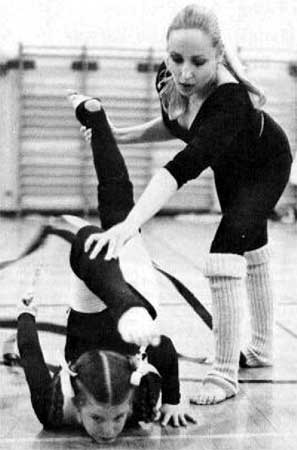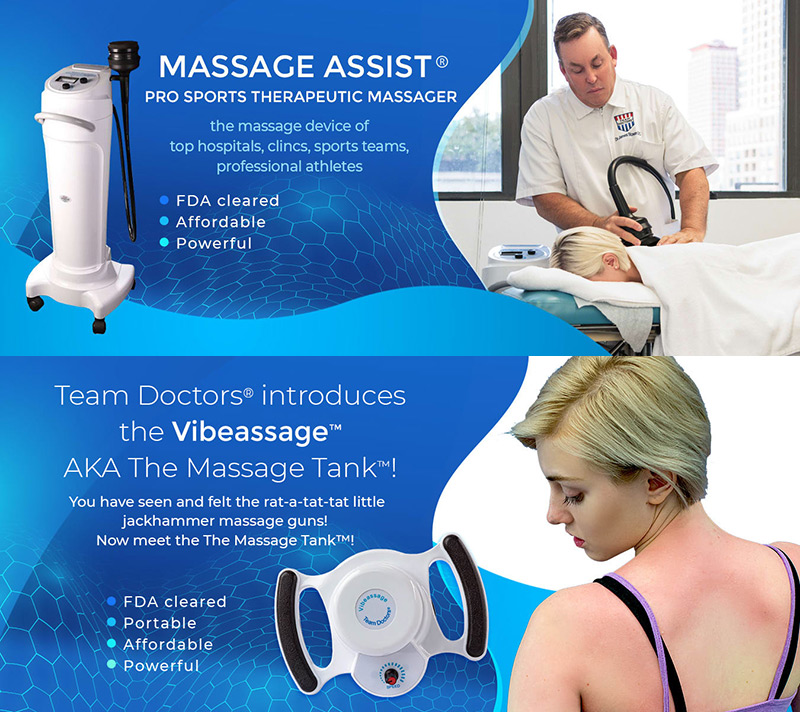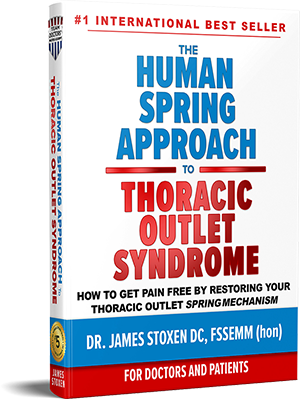My 8 Secrets To Improving Walking and Running Efficiency through Maximizing Human Spring
Tips For Better Health
Ask the doctor, Dr James Stoxen DC
There are many causes of fatigue symptoms and reduced walking and running efficiency…
During walking and running we burn most of our energy from muscle fatigue.
So, if inefficiency in walking and running is an important cause of fatigue, then a logical first step to diagnosis fatigue would be to evaluate the reason why we could be burning too much energy so that we could arrive at a more precise fatigue diagnosis.
When you go to the doctor complaining that you are always tired with muscle pain, fatigue and body aches, most doctors just do blood tests as the only fatigue test. When they come out negative, they wonder why they cannot find the cause of your fatigue and exhaustion.
This article is important for you if you seem to be always tired but:
- want to increase your fatigue limit and have more natural energy.
- want more energy in the performance of activities of daily living such as simple walking.
- want improved efficiency and to reduce weakness and fatigue in distance running and other sports.
- want to reduce the fatigue weakness that causes fatigue failure during impacts called overuse injuries like plantar fasciists, shin splints, leg, hip and back spasms or herniated discs.
This is the key!
Muscles fatigue faster when you use your body as a lever mechanism instead of the more efficient spring mechanism.
By releasing and strengthening your human spring as well as learning how to best use your spring mechanism, you may be able to increase your fatigue limit.
In this post I will answer questions such as:
- How do I improve walking and running efficiency?
- How do I protect myself from impacts that lead to fatigue strain and overuse injuries?
- Why am I so tired and how do I prevent extreme fatigue like chronic fatigue syndrome?
In the walking or running game, many athletes, coaches and trainers site muscle fatigue as one of the leading causes of poor performance.
Muscle fatigue will leave the joints to fall out of the most efficient alignment leading to fatigue strain that increases the risk of painful walking conditions and running related injuries.
Muscle fatigue and connective tissue weakness of the spring suspension system muscles or locking of the human spring, effects proper walking form, running technique and fatigue in sports, leading to poor performance in competitions that are chalked up to having a “bad day”.
With extreme or chronic fatigue, those battling fatigue every day without relief in sight can slide into fatigue depression, which will serve to exacerbate the problem, immensely.
Understanding how your human spring uses FREE elastic spring energy from the elastic tissues instead of muscle will allow you to improve efficiency of movement.
This article will teach you my 8 secrets to improving walking and running efficiency through maximizing human spring as a fatigue fighter…
What is muscle fatigue and what are the causes of muscle fatigue?
You will definitely fatigue faster if your body relies on muscles to push you as a lever mechanism during walking and running instead of of your human spring mechanism, springing you.
The two main functions of your human spring mechanism are:
ENERGY RECYCLING – Whether you run, jog, walk, use running for weight loss, barefoot run or running for your life, the spring suspension system muscle group recycles energy, making ambulation more efficient. If left undetected, a weakness in the suspension system can lead to acute or chronic fatigue. The Human Spring Model and Approach is a very simple, common sense model to study how the body stores, releases, and recycles energy for maximum efficiency.
PROTECTION FROM IMPACTS – The spring suspension system muscles (AKA landing muscles) protect you from the impacts of walking, running and sports. So, any amount of muscle fatigue or preload tension on the spring suspension system can cause a potential injury.
Muscle fatigue can contribute to low energy levels and even extreme fatigue. This can lead to pain and fatigue which can cause reduced performance and sport related injuries.
Chronically exhausted muscles fail to maintain the spring in the optimum alignment leaving the connective tissue in constant fatigue strain during simple movement causing constant daily damage to the bone, cartilage, tendons and ligaments.
Because we impact the earth 200,000 times by our 60th birthday this constant fatigue strain on the joints is what I feel is the primary cause of Degenerative Joint Disease (D.J.D) of the knee and hip that leads to preventable knee and hip replacements.
Sports related, overuse, impact injuries such as plantar fasciitis, shin splints, stress fractures, knee injuries, hip injuries and of course herniated discs could be attributed to this breakdown in the spring mechanism.
If you have unexplained poor performance in sports and leisure activities and any of these conditions above, odds are you MAY have an inefficient spring mechanism.
In this article I am going to focus on improving your walking and running efficiency
WALKING EFFICIENCY – We will review what walking form and technique will allow you to walk with natural spring in your step.
RUNNING EFFICIENCY – Which conditioning or running program will allow you to maximize human spring potential so you can run fast, run faster and with improved running efficiency.
The best way to maximize walking and running efficiency is to learn how your human spring mechanism works and maximize its potential! Understanding the engineering of the spring impact resistance mechanism can give you more detailed answers for your acute or chronic fatigue diagnosis. Dr James Stoxen DC
How does the human spring work to improve efficiency?
When you walk or run, the most efficient way to move is to load the forces of impacts into the elastic deforming tissues such as tendons and connective tissue structures and the least amount of loading forces into the muscles.
The way to understand how the human spring functions best, is to first look at the laws of physics and second to look at the scientific studies.
The key to understating how the body resists impacts and recycles energy is to apply the accepted laws of physics to the human body. I believe that when there are discrepancies between what is predicted by the laws of physics and the results of studies, then the laws of physics trumps the results of studies. If the variances cannot be explained by these laws then I assume there is a flaw in the study or the results and or conclusions are misinterpreted.
Hooke’s Law of Spring Mechanics
Hooke’s Law applies to spring mechanics.
It does not apply to lever mechanics.
Does a lever ever completely spring back to its original shape?
The body is not a lever. It is a spring
Hooke’s law of elasticity is an approximation that states that the extension of a spring is in direct proportion with the forces added to it as long as this load does not exceed the elastic limit or yield point.
The bottom line is that the more deformable or elastic your body becomes the more it can dissipate shocks as well as store, release and therefore recycle free elastic energy.
This is the key to improving the efficiency of your performance.
In other words the more the body spring is stretched (extension springs) or compressed (compression springs) the more energy we get from the spring.
For more information on how Hooke’s Law applies to the human spring read these articles:
- Video Tutorial #9 Hooke’s Law Of Physics, click here
- Video Tutorial# 143 What I Learned From Javier Sotomeyer , click here
- Video Tutorial #28 Reduce Over Pronation and Over Supination, click here
- Video Tutorial #12 Does The Body Spring Back Safely From Impacts?, click here
The human body abides by the ‘Hooke’s Law of Physics’
This loading of spring energy into the elastic components saves or recycles energy and therefore it increases muscle efficiency and overall efficiency of movement. For a clearer understanding, see picture above.
The muscles that power vertebrate locomotion are associated with springy tissues, both within muscle and in connective tissue elements such as tendons. These springs share in common the same simple action: they stretch and store elastic strain energy when force is applied to them and recoil to release energy when force decays. Although this elastic action is simple, it serves a diverse set of functions, including metabolic energy conservation, amplification of muscle power output, attenuation of muscle power input, and rapid mechanical feedback that may aid in stability. Flexible mechanisms: the diverse roles of biological springs in vertebrate movement, Thomas J. Roberts and Emanuel Azizi
This tensioning or rewinding of the tendon fibers burned largely isometric muscle contractions is achieved with very little change in the length of the muscle fibers themselves. Supertraining Yuri Verkhoshansky Mel C. Siff
The muscles contract to one length. The tendons stretch to allow the movement of the joints. This elastic recoil of your elastic tissue is the most efficient method of ambulation. This is spring action and not lever action. Therefore developing better spring strength is the key to maximum efficiency. Dr James Stoxen DC
Essentially what this research found was that muscle contraction was not the primary mode of propulsion during running. This explains the efficiency in running long-distance through the spring action or elastic recoil action of tendons and connective tissue fibers versus muscle contractions.
So how can you increase walking and running efficiency to reduce fatigue?
Here ya go….
Increase maximal “safe” loading of the force of impact into the elastic tissues by:
- Maximize Spring Loading by Releasing the Protective Reflex Muscle Spasms that Preload and Compress the Human Spring.
- Maximize Spring Loading by Increasing Flexibility of the Elastic Tissues.
- Maximize Spring Loading by Maximizing Joint Play of all joints of the Human Spring.
- Maximize Lever Strength of Spring Suspension System Muscles and Tendons.
- Maximize Spring Strength of the Spring Suspension Muscles and Tendons.
- Increase the Aerobic Endurance Strength of the Spring Suspension.
- Reduce Mental Stress that may cause a Preload Compressive Force on the Human Spring.
The first important step is to understand the anatomy and function of the human spring.
This is what I call the spring suspension system also known as the landing muscles or the pronator supinator cuff muscles (pictured above)
When you look at the structure of these muscles (above) they are primarily tendons with some muscle structure closer to the origin. The obvious long tendon length engineering tells you these muscles are more suited for elastic recoil or spring rather than muscle contraction or lever push activities as opposed to the gluteus maximus which is mostly muscle and less tendon.
My 8 Secrets To Improving Walking and Running Efficiency through Maximizing Human Spring
1. Maximize spring loading by releasing the tonic protective reflex spasms that preload the spring
If you don’t do this before every walk or run, you could develop a locked spring. What I’m finding during clinical diagnosis of patients who walk or run with a locked spring and have impact related injuries such as;
- an inefficient or defective spring
- plantar fasciitis
- heal pain
- shin splints
- knee pain
- hip pain and
- low back pain
- herniated discs that don’t heal (they do heal you know)
How To Release Spasms from your Human Spring
- Muscle Spasm Release Of The Knee Popliteus Muscle
- Muscle Spasm Release Of The Gluteus Medius Muscle of the Hip
- Muscle Spasm Release Of The Subtalar Joint Of The Ankle On The Inside
- Muscle Spasm Release Of The Ankle (Subtalar Joint Outside)
- Muscle Spasm Release Under The Big Toe And Second Toe
- Muscle Spasm Release Above The Big Toe And Second Toe
- Muscle Spasm Release of the Tissue Of The Ankle Mortise
2. Maximize spring loading by increasing flexibility of the Elastic Tissues
Sometimes when I see runners warm-up I see them stretching their foot while standing in an attempt to flex the knee until the heel approximates the gluteal muscles. Have you ever kicked your own ass with your heel when running? NOOOOOO Why would you think you need to stretch your quad this far?
Meanwhile your foot takes up the majority of the impact forces and it is the only body part that is locked in a binding device all day. You MUST stretch your bare foot in all directions AND separate the toes with the scissors stretch and my Mortons neuroma stretch.(see lower in this post for links)
The main impact force is primarily absorbed and stored and recycled through the connective tissue structures of the arch of the foot and the suspension system that is represented by the tibialis posterior, tibialis anterior, peroneus longus and peroneus brevis muscles. Along with all the other muscles you stretch you must stretch the foot and ankle in the directions of inversion, eversion, adduction abduction, pronation, supination,
How to Stretch your Human Spring
I have evaluated a lot of top athletes and celebrities feet, as a doctor who has worked with Dancing With The Stars Tour, So You Think You Can Dance Tour, Michael Flatley’s Celtic Tiger Tour along with many more. I have found that the elite level professional dancers’ feet, have had some of the strongest impact resistant and lower extremities of any athlete that I’ve ever examined!
I see a lot of people stretching and holding the stretch for long durations thinking that this provides better flexibility. It certainly seems like you’ll get increased flexibility by taking your time to stretch the structures, however this is definitely not the case when performing the drills to increase dynamic flexibility and strength within the ranges.
Where did I learn a lot about flexibility and strength?
My close friend and former girlfriend, Irena Vdovets, USA National Team Coach USA Olympic Rhythmic Gymnastics Team, taught me a lot about flexibility and strength.
Irina Vdovets is Founder and Owner of Illinois Rhythmic Gymnastics Training Center.
Irina Vdovets, the only two-time U.S. Olympic rhythmic gymnastics coach (1988, 1992), was the coach for Olympians Michele Berube, Jenifer Lovell and Diane Simpson-Bundy. She coached the U.S. World Championships Team four times (1985, 1987, 1989 and 1991) and was a U.S. national team coach from 1985-95. In 1986-87, Vdovets was honored as the U.S. Rhythmic Coach of the Year. Vdovets currently lives in Chicago and is the program director at Illinois Rhythmics.

Right to left, Edwin Vdovets, Irina Vdovets, Dr. James Stoxen DC and dancers from the Ricky Martin Tour
Being educated in achieving the level of master of sports and of course the incidental fact that she was the national team coach for the US Olympic team in the 1988 and 1992 Olympic Games, she understood how strength training should be performed at maximum flexibility ranges of motion.
I remember how she had long elastic bands attached to the feet, specifically the arches of the feet of the gymnasts and had them go through incredibly flexible positions where the band was fully stretched at this maximum flexibility point, adding maximum strength at maximum ranges of motion.
This kind of strength training at the maximum range of motion is something usually only seen at the Olympic level. That is why they become champions and others do not.
Not only must you have maximum flexibility within the range of motion you are training at, but you must have maximum impact spring strength in the end range. You will also need maximum impact training at end ranges of motion of inversion, eversion, adduction, abduction, pronation, supination, dorsiflexion and plantar flexion within the spring suspension system to insure you:
- have maximum protection from impact forces in all ranges these muscles work.
- have maximum recycling of energy and efficiency from impact forces in all ranges these muscles work.
I do the same release stretch and dynamic flexibility training that I am recommending to you in this article.
Is there a difference between how long muscles take to strengthen vs tendons?
Before I run barefoot and before my athletes run, I spend 20 minutes stretching these muscles with these techniques:
- Scissor Stretching Of The Feet
- Stretching Great For Mortons Neuromas And Narrow Heels
- Stretching Of The Foot While Sitting At Your Chair
- A Stretch To Increase The Flexibility Of The Arch Of Your Foot
3. Maximize Elastic Spring Loading by Maximizing Joint Play of all the Joints of the Human Spring
The spring loading happens in the foot. You must make sure all the 33 joints of the foot are released so the spring energy can be loaded and unloaded into the arch of the foot to maximize the slingshot effect of the suspension system muscle “snap” at toe off. So this could be considered a treatment of fatigue.
Muscles and tendons that connect to the 33 joints of the foot such as the tibialis posterior, attached to bones that must be able to move in the full range of motion of their design. If the muscle–tended complex can’t move the bones in the full ranges of motion of plantar flexion, dorsi flexion, eversion, inversion, abduction, adduction, pronation and supination than it’s impossible for the muscle–tendon to get maximum strength.
How does a locked spring feel?
In some cases the foot feels like a piece of frozen steak that you just took out of the freezer. It’s not cold it’s just a rigid lever versus a springy wiggly spring mechanism.
The primary joints that I find that lock are the metatarsal cuneiform joints of the second and third digits (toes). It’s also interesting that these tendons of your spring suspension system muscles attach directly in these areas. The area is around the blue tendon click here
4. & 5. Maximize Lever Strength and Spring Strength of the Spring Suspension Muscles.
In order to get maximum strength of the spring suspension system connective tissue structures, the ultimate training to:
- MUSCLE CONTRACTILE TISSUE STRENGTH – This can happen in as early as 2 to 3 weeks – do resistance training which I call lever training of all the muscles of the spring suspension system.
- TENDON AND ELASTIC CONNECTIVE TISSUE STRENGTH – It takes approximately 20 weeks to strengthen tendons and ligaments. More importantly, do impact or spring training of of all the muscles of the spring suspension system to strengthen these elastic structures.
Over pronation and over supination are a result of a weakness in the muscles and tendons that maintain the foot within the safe range.
The majority of injuries are related to some inability to absorb the impact forces of the landings.
What that means is that when the impact force becomes absorbed into this pre-loaded structure there is no place for the impact force to go because it’s at maximum capacity. Therefore there is no other place but into the connective tissues or joint structures.
The result is, plantar fasciitis, heel pain injuries, shin splints, knee pain, hip pain and of course the most common pre-load force overload on the compression springs of the spine called the herniated, bulged or slipped vertebral discs.
Science has determined the optimum way to build tendon and connective tissue strength and muscle power is by minimum contact time on the ground during plyometric jumps etc
The ability to store elastic energy depends on the magnitude of the stretching, the loading of the mechanism and the transition time between the termination of the eccentric component which is the loading of the spring at foot plant and the concentric component or the unloading of the spring at toe off.
If there is a delay between the loading and the unloading then there is less stored elastic energy because a more prolonged delay will allow fewer cross bridges to remain attached after the stretch (Edman Et Al 1976).
The ability to store elastic energy depends on the magnitude of the stretching, the loading of the mechanism and the transition time between the termination of the loading or the eccentric component and the toe off or the concentric phase of the movement.
This means that the longer the contact time the more plastic deformity happens.
It has been noted that the greater the velocity of stretching during the eccentric loading of the force of the impact into the mechanism the greater the storage of elastic energy (Rack & Westbury 1974)
This means that movements must be quick to develop maximum spring strength.
Footwear with cushions slows the loading time.
What this also means is that your landing with no binding devices or cushions on the foot ie; barefoot during dynamic stretching drills may be optimum for developing maximum spring strengthen and optimum efficiency.
What is interesting is that scientists have found that the longer the contact time the more plastic deformity happens. This allows for maximum elastic deformity with minimal plastic deformities.
It also means that a job where an athlete is standing on his feet for a sustained period of time is not the optimum job if you want to maximize performance efficiency and reduce risk of injuries from a locked spring.
I stand on my feet 12 – 16 hours a day sometimes 7 days a week for weeks on end doing pain exorcisms to release chronically ill patients from physical lockdown of the spring mechanisms. You would think that I should always be tired or in some myalgic state from fatigue of connective tissue structures or in a state of exhaustion, but Im not.
So how do I accomplish barefoot running 5-6 miles on solid concrete 3 days a week without injuries or conditions?
I prepare all my athletes and myself for barefoot training with the steps listed in this article.
We cannot just do high impact, quick spring movements on a cold, stiff, or locked human spring.
What has been recommended by many top strength coaches is that we do a combination of tendons stretching during the dynamic movements of the warm-up before this high impact spring training (plyometrics).
Dynamic Stretching – Performing the movements of running while stretching at the same time.
This points to a training or running style that is common amongst barefoot runners. The stride length is shorter and the foot, ankle, and the rest of the lower extremities remains completely relaxed at impact. This achieves maximum depth of the loading of the force of the impact into the spring and allowing the momentum and the force of gravity pulling the athlete to fall forward to create the SnapBack or elastic recoil release of energy in the toe off.
Essentially what the theory says is that by getting maximum eccentric loading of energy into the elastic recoil mechanism of the muscle tendon unit you are also developing a stronger muscle tendon unit with primary action occurring in the elastic components versus the muscular components. The more a runner relies on the elastic recoil or spring energy the more efficient the runner will become.
Examples of this connective tissue strengthening drills are:
- zigzag runs
- side shuffles
- carioca drills and
- one other interesting training method is freestyle or structured barefoot dance activities.
Watch above as Dr. James Stoxen DC trains 2 time USA Taekwondo Champion Christian Medina Barefoot Running with Zig Zag Drills
For more articles on Human Spring Strengthening drills,
- Watch Video Tutorial #133 Circle Walk, Jog, Run And Sprint, click here to view
- Watch Video Tutorial #179, 45 Degree Zig-Zag Hop, Jump Or Run, click here to view
To better understand how the body springs your body off the ground and how to improve your ability to do this efficiently I highly recommend you read these two posts:
- The Forgotten Muscles Of The Human Spring, click here to view
- How The Human Spring Absorbs Impacts Through The Arch, click here to view
6. Increase the Aerobic Endurance Strength of the Spring Suspension
I find clinically that patients with a chronically locked spring are always tired.
You can have a stiff or released aerobically weak human spring and still have injuries. The injuries happen after the spring suspension system muscles get tired through overuse or great strain or stress over distances leading to muscle pain fatigue and a high risk for injuries.
The other reason why we have injuries during impacts especially when adding miles is from the fatigue weakness of the elastic recoil mechanisms of the spring suspension system muscles.
When the spring suspension system muscles are over worked, fatigued during long runs or extended runs, the muscles fatigue faster and are more apt to lose control of the loading forces causing injury to the tissues.
This could manifest itself as foot pain from long walks or running. This body fatigue might feel like pain in the bottom of the foot, pain in the calf muscle, tendinitis of the foot, sprained foot, tenderness in the foot tendons, a bruised heel, bone spurs in the foot or calcaneus spurs and general foot pain and swelling.
7. Increased Mental Stress Reduces Efficiency By Locking The Spring
One of the effects of fatigue related to mental stress that leads to poor performance in activities of daily life and even injuries is what I call stress fatigue, brain fatigue, anxiety fatigue and the worst one, fatigue depression.
The bottom line is that people walk and run differently when they are tired, anxious, depressed or angry. You can see they are not themselves in their walk.
This is when we are stressed or angry during our running program, leading to a tension of the lower extremities that puts a pre-load tension on the spring suspension system mechanism that causes our spring suspension system to reach a fatigue limit causing muscle aches and fatigue and what I call arthritis fatigue.
When you have stress and fatigue combined this can make you wonder, why am I so tired?
The body is moving in an inefficient way as your mental state overrides the spring mechanisms ability to maintain efficient impact spring action thus switching to more of a muscle lever action, which is ineffectual causing you to become fatigued to0 quickly.
8. Remove The Binding Device. SHOES!
When we bind the foot with shoes all day it inhibits maximum foot movements such as abduction, adduction, inversion, eversion, supination and pronation. (see illustration above) That is why we cannot wait to get our shoes off at night.
Conclusion!!
The bottom line is that the more deformable or elastic your body becomes the more it can dissipate shocks and in addition to that the more it can store elastic energy to improve efficiency of your performance. Dr James Stoxen DC
So, as you can see, the spring is the thing when it comes to improving walking and running efficiency.
If there was an owners manual that taught you that:
- your body was a lever and a spring.
- using the body as a spring vs a lever would allow you to improve performance, be more efficient and reduce risk of injuries
- how to use your body as a spring vs a lever
- how to fine tune your human spring so it doesn’t get broken or reduce performance over time
- how to maintain your human spring so you can have it for a lifetime
This would be an important chapter in that human spring owners manual.
This video tutorial was taken from the lecture:
Title: Run For Life! Barefoot
Presented by Dr. James Stoxen DC
The Second World Anti-Aging Medical Conference
February 4th-6th 2011
Mexico City, Mexico
Thank you for your interest in my article!
Check out the Barefoot Runners Society and find a chapter near you. Here..
Like this article?
We will send the next one to you!
Register for our updates below!
Disclaimer
All content on teamdoctorsblog.com, including without limitation text, graphics, images, advertisements, videos, and links (“Content”) are for informational purposes only. The Content is not intended to be a substitute for professional medical treatment, advice, or diagnosis. Please remember to always seek the advice of a qualified physician or health professional with any questions you may have regarding any medical concerns. Dr James Stoxen DC and Team Doctors does not recommend or endorse any specific treatments, physicians, products, opinions, research, tests, or other information it mentions. Said Content is also not intended to be a substitute for professional legal or financial advice. Reliance on any information provided by Team Doctors is solely at your own risk.










